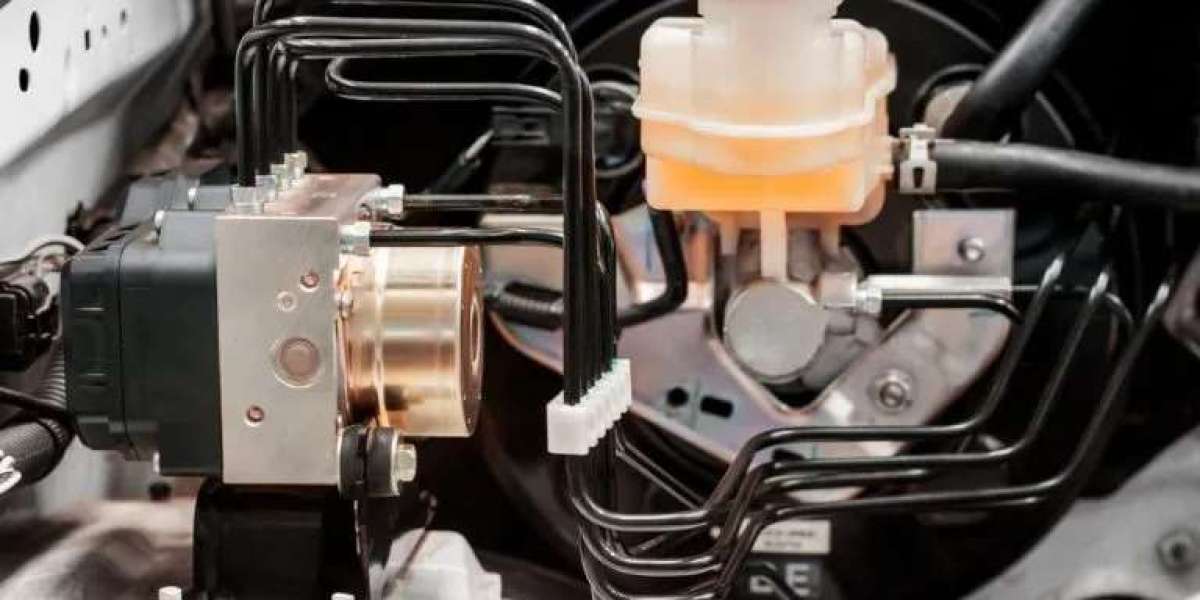Imagine you’re standing in front of a massive construction machine. Its arm lifts, tilts, and rotates with precision so fine that it almost looks choreographed. Behind this seemingly effortless motion lies a component you may not often think about: the rotary actuator. While you might see gears turning or cylinders extending, it’s the rotary actuator that transforms fluid power into controlled rotation.
In today’s world, where industries push for faster production, smarter automation, and greater efficiency, rotary actuators are evolving. They’re no longer just simple devices converting hydraulic energy into motion; they’re integrated with servo motor drives, hydraulic internal gear pumps, and even optical position sensors to deliver unparalleled accuracy. But if you’ve ever wondered how these technologies connect—or why they matter for industries ranging from robotics to mobile hydraulics—you’re about to uncover the full picture.
This isn’t just about machines. It’s about the hidden synergy between mechanics, electronics, and hydraulics. Let’s step into the story of rotary actuators, and as you read, picture yourself inside the system: you’re the engineer, the operator, and even the researcher discovering how innovation changes the way machines move.
1. The Role of Rotary Actuators in Modern Motion
When you think of actuators, linear ones usually come to mind—pistons extending and retracting, pushing heavy loads. But a rotary actuator takes this one step further. Instead of just straight-line motion, it gives machines the gift of controlled rotation. Whether it’s turning the boom of an excavator, moving the arms of a robot, or controlling valves in power plants, rotary actuators make angular precision possible.
You can picture it like this: a hydraulic cylinder might be the biceps of the system, pushing and pulling, while the rotary actuator acts like the wrist, turning and orienting. Without it, flexibility vanishes. With it, systems become agile.
And here’s the twist—today’s rotary actuators aren’t stand-alone. They interact with hydraulic pump and valve assemblies, servo motor drives, and even cylinder position sensors to form intelligent motion systems. The actuator isn’t just reacting to input; it’s now part of a larger dialogue within the machine.
2. Hydraulic Foundations: Why Internal Gear Pumps Matter
If the rotary actuator is the star performer, the hydraulic internal gear pump is the heart quietly working backstage. Gear pumps ensure that the right flow and pressure of hydraulic fluid reach the actuator at precisely the right moment.
Internal gear pumps are often chosen for their efficiency and smooth operation. Unlike vane or piston pumps, they provide a consistent flow with minimal pulsation. Imagine you’re handling a delicate task—maybe in a robotic assembly line where precision is life or death for product quality. Any irregular fluid flow could mean jerky movements, damaging components or slowing production. That’s why pairing rotary actuators with internal gear pumps makes sense: together, they deliver power with elegance.
But pumps don’t act alone either. They rely on hydraulic pumps and valves that direct flow, 2-way hydraulic flow control valves that balance speed, and cross pumps that manage redundancy. And when you add proportional valves into the mix, you suddenly have a machine that’s not just moving—it’s thinking in terms of proportional control.
3. The Rise of Servo Motor Drives and Precision Control
Now let’s switch to the electrical side. You know how your car’s steering feels more precise when it’s assisted electronically? That’s exactly what servo motor drives bring to actuators.
A servo motor drive is essentially the translator between the command (like from a controller or joystick) and the physical motion of the actuator. By adjusting voltage, current, and frequency, it ensures the actuator doesn’t just rotate—it rotates to exactly the right angle, at the right speed, with the right torque.
This level of control has changed industries. For example, in servos robotics, a robot arm equipped with a rotary actuator and controlled by a servo drive can move delicately enough to pick up a glass of water without spilling it, or strong enough to lift heavy automotive parts into place.
But precision comes with cost. That’s where servo motor price enters the conversation. As an engineer or business owner, you constantly balance performance with budget. You might ask yourself: is the higher cost of servo-driven systems justified by efficiency gains, reduced downtime, and energy savings? More often than not, the answer is yes.
4. Integrating Sensors: The Eyes of the System
Imagine driving a car with no speedometer, no fuel gauge, no GPS. You’d be guessing at best. That’s why actuators today rely on sensors—their “eyes.”
Take optical position sensors, for example. They help measure rotation angles with incredible accuracy. When paired with cylinder position sensors or dbw (drive-by-wire) systems, actuators no longer act blindly. They know where they are, where they’re supposed to be, and how fast they should get there.
This level of intelligence transforms applications:
In hydraulic pump with cylinder systems, sensors prevent overextension or collapse.
In hydraulic pump motors, they optimize torque delivery.
In servo drives and motors, they create a feedback loop where every motion is instantly corrected if it strays off path.
For you as a system designer, sensors mean confidence. You’re not relying on assumptions—you’re working with real-time data.
5. Energy and Efficiency: The Gearbox and Beyond
There’s another unsung hero in this story: the high-speed planetary gearbox. When combined with rotary actuators, it amplifies torque while managing speed. Think of it like the gear system on your bicycle—you might pedal at a steady rate, but the gears determine how efficiently that motion translates into forward momentum.
In heavy-duty equipment, the gearbox ensures actuators can handle high loads without sacrificing smoothness. Pair it with a hydraulic pump valve or a pump vane, and you’ve got a compact yet powerful system that conserves energy while delivering raw power when needed.
And here’s where the bigger picture emerges: efficiency isn’t just about power consumption. It’s about minimizing downtime. Technologies like fix hydraulic leak solutions and hydraulic leak repair processes ensure systems remain reliable. After all, even the most advanced rotary actuator is useless if hydraulic fluid is leaking out of the system.
6. Real-World Applications: From Robotics to Mobile Hydraulics
Now let’s take this out of theory and into reality. Picture yourself in different industries, each demanding motion in unique ways:
Construction equipment: Rotary actuators tilt and rotate massive arms, powered by hydraulic pumps and valves that channel enormous force precisely where needed.
Aerospace: In aircraft systems, lightweight actuators paired with dc servo drives and optical sensors handle tasks like adjusting flaps or controlling landing gear.
Robotics: Precision-controlled actuators in servos robotics enable delicate assembly in electronics manufacturing.
Water management: Systems with water flow controller valves and actuators manage flow in treatment plants.
Automotive: Drive-by-wire (dbw) technology transforms the driving experience by replacing mechanical linkages with electronic-hydraulic synergy.
In each of these cases, actuators don’t act alone—they’re part of a web of interdependent technologies including motors, pumps, valves, and sensors.
7. The Cost Question: Balancing Performance and Investment
Let’s come back to the ever-present consideration: cost. While servo motor price can seem high compared to traditional solutions, think about what you gain:
Reduced maintenance thanks to precision control.
Extended component lifespan due to smoother operation.
Lower downtime because systems like hydraulic pump with motor assemblies can self-adjust to operating conditions.
In other words, it’s not just an upfront investment—it’s a lifecycle calculation.
8. The Future of Rotary Actuators
Looking ahead, the story doesn’t end here. Rotary actuators are evolving to integrate even more with digital ecosystems:
Predictive maintenance through sensor data.
Integration with AI systems for self-optimizing motion.
Miniaturization for use in drones and lightweight robotics.
Smarter fluid systems combining zone valves with hydraulic pump valves to optimize flow automatically.
For you, the designer, engineer, or curious learner, this means one thing: rotary actuators will remain at the heart of motion, but the way they interact with surrounding technologies will keep redefining industries.
Conclusion
When you strip it all down, the rotary actuator is more than just a part—it’s a symbol of synergy. It shows how hydraulic internal gear pumps, servo drives, hydraulic pumps and valves, gearboxes, and sensors can work together to create movement that is strong, precise, and intelligent.
The next time you see a machine rotate with elegance—whether it’s a robot arm, a construction crane, or even the steering system in a car—remember the story behind it. Remember how the actuator didn’t work alone but alongside pumps, valves, sensors, and drives.
And most importantly, imagine how these systems will evolve in the next decade. Because the future of motion isn’t just about rotation—it’s about intelligence, efficiency, and synergy.














